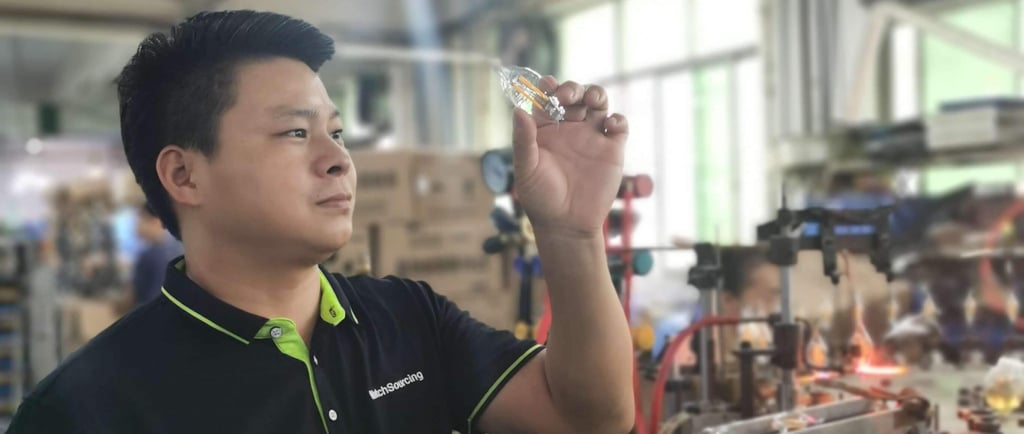Factory Verification Checklist: Key Points for Licenses, Production Capacity and Certification — A Practical Guide for China Sourcing Agents
Verifying a factory is the first and most important step in safe sourcing from China. For overseas buyers, choosing a factory without a proper audit can lead to quality issues, delays, or even fraud. A professional China sourcing agent must use a clear factory verification checklist to confirm legal status, production ability, and compliance. Below is a practical, step-by-step checklist and the key items every China procurement agent should inspect when verifying a supplier.
Victor
9/25/20253 min read


1. Legal and Business Credentials — Verify the Basics
Start with documentation to prove the supplier is a real, legal entity.
Business license: Check company name, registered address, legal representative, business scope and registration period. Verify against local government records when possible.
Export license & customs record: For exporters, confirm the export qualification and past export activity.
Tax registration and VAT invoice capability: Ensure the factory can issue compliant invoices for trade and tax purposes.
Company structure: Distinguish between manufacturer, trading company, and mixed types. True factories with on-site production are preferred for control and traceability.
Why it matters: Fake or shell companies may take deposits and disappear. A China sourcing agent prevents this by confirming legal identity.
2. Production Capacity & Facilities — Can They Deliver?
Next, assess whether the factory can meet your required volume and timeline.
Factory size and layout: Note production areas, storage space and workflow.
Equipment and machinery: Verify machines are suitable and well maintained. Check age and model of critical equipment.
Workforce: Count skilled workers on the production line and supervisors for your product type.
Monthly output and lead time: Ask for recent production reports and realistic lead times for your order size.
Capacity flexibility: Can they scale up for larger orders or handle rush orders?
Why it matters: A factory that looks good on paper may lack real output. A sourcing agent tests capacity claims with on-site checks and production records.
3. Quality Management System — Processes that Protect You
Look for systems that ensure consistent product quality.
Quality control (QC) team: Meet QC managers and learn their inspection routines.
Quality certifications: ISO 9001 or industry-specific systems indicate process control. Ask for certificates and audit dates.
Inspection records: Review past inspection reports and corrective action logs.
Material traceability: Confirm raw materials are logged and traceable to vendors.
Testing capability: Check if the factory performs in-house tests and where they send samples for third-party tests.
Why it matters: Processes and records reduce the chance of repeated defects. A China procurement agent confirms these systems actually work.
4. Product Certifications & Compliance — Meet Market Rules
Ensure the factory can meet the rules of your target market.
Product certificates: CE, RoHS, FCC, UL, FDA or other needed marks—verify originals and scope.
Material safety: For toys, textiles, or electronics, ask for test reports showing limits for lead, phthalates, flame retardants, etc.
Labeling and packing rules: Confirm adherence to language, safety labels, and recycling rules required by destination countries.
Environmental and social compliance: Check for audits like BSCI, Sedex, or local environmental permits when relevant.
Why it matters: Non-compliant goods can be held at customs or recalled. The sourcing agent avoids costly compliance failures.
5. Supply Chain & Subcontracting — Who Actually Makes the Product?
Trace the full supply chain to spot hidden risks.
Raw material suppliers: Get names and basic info of key material vendors.
Subcontracting practice: Verify whether the factory outsources processes. If they do, visit subcontractors or reject hidden subcontracting.
Outsourcing records: Ask for agreements and quality controls applied to subcontractors.
Why it matters: Hidden subcontracting often causes quality and IP issues. A diligent China sourcing agent uncovers the real production path.
6. Workplace Conditions & Ethical Checks — Responsible Sourcing
Good production depends on safe and stable workforces.
Workplace safety: Check fire exits, PPE, ventilation, and chemical handling.
Worker contracts and hours: Verify legal working hours and social insurance where required.
Child labor & forced labor checks: Confirm age checks and legal hiring practices.
Worker turnover: High turnover can signal unmanaged quality risks.
Why it matters: Ethical issues hurt reputation and may block market access. Procurement agents must include social checks in audits.
7. Commercial & Financial Health — Will They Stay in Business?
A financially weak supplier can disrupt supply.
Financial summary: Request basic financial indicators or payment history with material vendors.
Client references: Talk to existing customers about reliability and payment records.
Insurance coverage: Check product liability or factory insurance where applicable.
Why it matters: A stable supplier minimizes the chance of sudden shutdowns or default.
Conclusion
A thorough factory verification checklist helps a China sourcing agent separate reliable manufacturers from risky suppliers. Inspect legal documents, production capacity, quality systems, compliance, subcontracting, workplace conditions, and financial health to form a complete picture. Use on-site audits, photo evidence, test reports, and supplier references to support your decision.
If you want professional factory verification and supplier audits, contact Aysourcing for audit services and sourcing support.
Aysourcing — www.aysourcin.com
